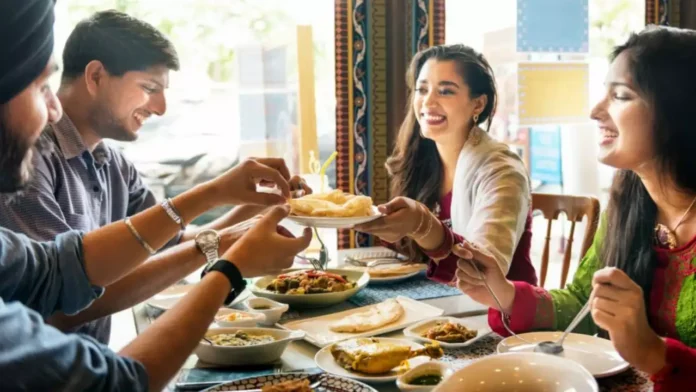Indians are cooking at home less frequently than they did a decade ago, as indicated by government data and research reports. This decline is accompanied by a rise in spending on out-of-home dining and processed foods. The trend is expected to intensify due to the growing popularity of quick commerce and food delivery apps, increasing income levels, and evolving food preferences.
According to the latest data from the Ministry of Statistics and Program Implementation (MoSPI) and ICICI Securities, urban elite households at the top of the pyramid allocated nearly half of their food budget to packaged food, restaurant meals, and food delivery in FY23. This is an increase from 41.2% a decade ago.
“Due to the growing prevalence of food delivery and quick commerce apps, the proportion of processed food in consumption is likely to have risen. As households ascend the income ladder, their consumption patterns evolve,” commented Paras Jasrai, Senior Analyst at India Ratings and Research.
Continue Exploring: Quick commerce platforms Blinkit and Zepto expand into e-commerce, targeting fashion, beauty, electronics, and more
During the period in review, spending on processed food by elite urban consumers increased by 2.2 times, while it rose by 3.3 times for middle-income consumers. This shift has occurred as the proportion of food items in overall expenditure has decreased.
In the same period, middle-income households increased their spending on processed food and beverages from 16% to nearly 25% of their food budget.
“Given the increasing spending power of the middle class, demand is expected to rise. Additionally, the growing number of working couples further contributes to this demand,” commented Madan Sabnavis, Chief Economist at Bank of Baroda, highlighting the high potential for growth.
Sabnavis also highlighted that innovation in products like low-sugar and organic food and beverages is expected to resonate with higher income groups, further contributing to growth.
According to the ICICI Securities report, the top 5% of the urban population are reducing their absolute spending on staples, suggesting that the kitchen is becoming less central for elite urban households.
The report reveals that the urban elite spend an average of INR 971 per month per person on food delivery in FY23, compared to INR 60 per person in mid-to-high income families. This expenditure is projected to have increased by 18% in FY24.
Continue Exploring: India sees surge in fish consumption driven by rising incomes and evolving diets
“There is a shift in urban households from consuming staples to more value-added and experiential foods, which inherently are processed,” stated social commentator and brand specialist Santosh Desai.
“Undoubtedly, food delivery has been a dominant trend of the past decade, alongside the premiumization of food experiences. As a result, many households are shifting away from the need to cook every meal at home and are purchasing more processed foods even for consumption at home,” explained the source.
The trend is not exclusive to urban households, as the proportion of processed food and beverages has also increased among rural households during this period.
According to Mospi data, there is a significant rise in expenditure on processed food and beverages as the income level of urban households rises. In contrast, spending on cereals, eggs, fish, meat, and edible oil remains steady. Nonetheless, there is a slight uptick in spending on milk and milk products.
Although urban households cook less frequently, when they do, they tend to use branded packaged goods as ingredients rather than fundamental basics. This tendency has resulted in an increase in demand for processed foods, according to B Krishna Rao, Senior Category Head of Parle Products.
“Even the current fad of millet-based products offered by companies would eventually fall into (category of) processed food,” he said
According to experts, spending on dry fruits has increased from 0.8% to 1.3% of total household expenditure in urban areas over the past decade, and from 0.6% to 1.2% in rural households, indicating rising incomes and aspirations. Meanwhile, Mospi data revealed that spending on sugar and salt has decreased by half in urban households over the same period, dropping from 1.2% to 0.6% of the budget.
Continue Exploring: Dry fruit consumption in India soars by 25% in 2023, fueled by health-conscious trend post-pandemic



